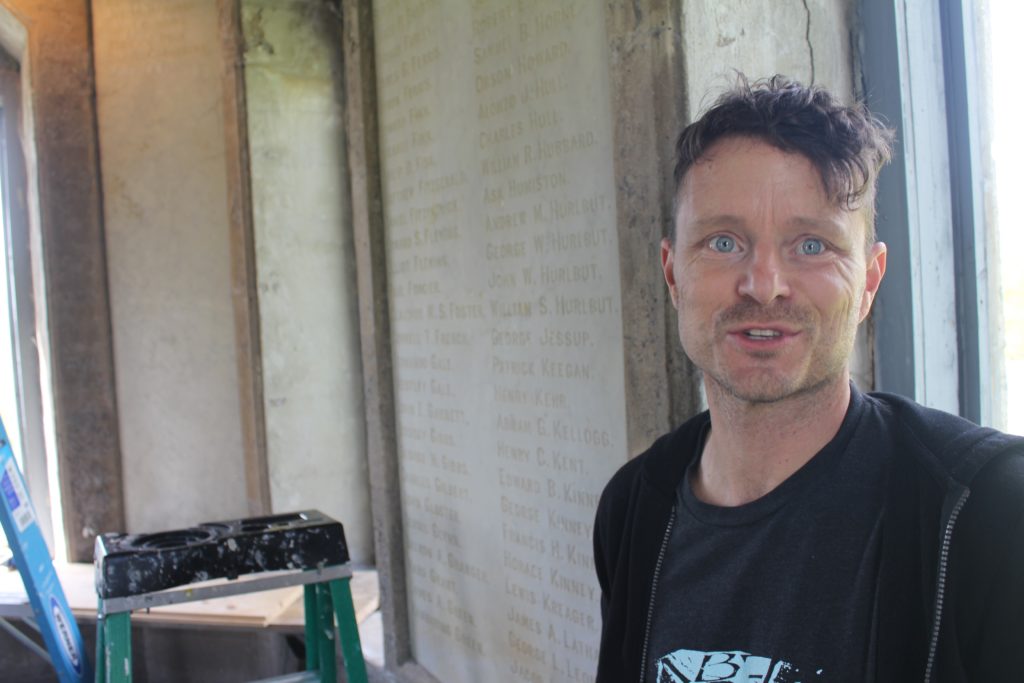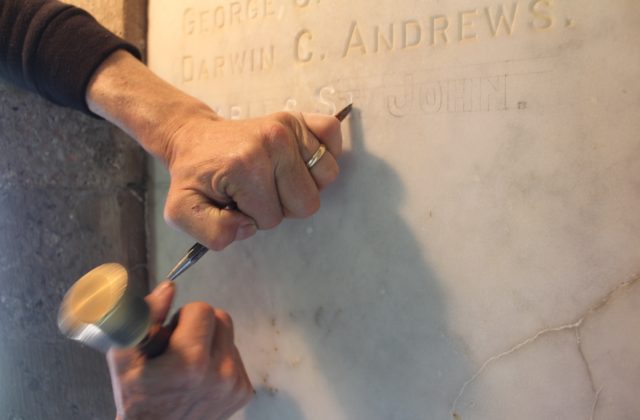African-American Civil War Soldier Remembered in Winsted
Righting a Historical Wrong
By Wiley Wood
The African-American community in northwestern Connecticut responded strongly to the call for volunteers during the Civil War, according to local historian Virginia Shultz-Charette, and at least seven black men from Winsted served in the Union Army. Until a few days ago, six of them had their names inscribed on the Soldiers’ Monument in Winsted’s Memorial Park.
The seventh, Charles St. John, was born in Winsted and lived there until 1859, when he married and moved to Colebrook with his wife, Samantha. He enlisted in the 29th Connecticut Volunteer Infantry, an African-American unit, in December 1863, traveling to Bridgeport to do so because he couldn’t join up in Winsted.
His unit was deployed on the forward skirmish line at the Second Battle of Fair Oaks, outside Petersburg, Va., where St. John was shot in the jaw on Oct. 27. He died on Nov. 3 in the military hospital at Fort Monroe, but his place of burial is unknown.

When Shultz-Charette realized the omission of St. John from the 60-name list on the Soldiers’ Monument, she brought it to the attention of Jack Bourque, then chair of the Monument Commission. “Charles St. John belongs on there,” she told him. Bourque and the commission agreed.
Their search for a stone carver led them to Adam Paul Heller, of Norfolk, whose practice includes designing and making funerary monuments. Heller studied traditional stone-carving methods at the Abbey of Regina Laudes in Bethlehem, Conn. and the John Stevens Shop in Newport, R.I.
To duplicate the style of the 1890 lettering, Heller took rubbings of the original list, then traced the individual letters of St. John’s name onto the marble in pencil.
His tools, once the letters have been transferred, are simple: a pair of carbide-tipped straight-edged chisels and a weighted mallet.
On a recent day, with the sun shining outdoors, Heller was perched on a ladder tapping with quick, light strokes inside the outline of the letters. First he removed the waste material from the center of the letter, then with a smaller chisel, making pass after pass, he carved the sides of the v-shaped groove that is distinctive of hand-carved lettering.
A more common procedure nowadays, Heller explains, is to lay a rubber stencil over the stone and sandblast the letters into the surface.
The commission also encouraged Shultz-Charette to search for and contact any descendants of Charles St. John. He had a daughter, but all trace of her disappears after the death of Samantha, St. John’s widow, in 1870.
But Shultz-Charette did manage to track down one of St. John’s collateral descendants, a Connecticut resident named Darnell Goldson. “He wasn’t hard to find,” said the historian. “He is the chairman of the Board of Education in New Haven.” Goldson will attend the Memorial Day ceremonies in Winsted and lay flowers on the town’s behalf at the war memorial.
And Charles St. John’s name will have been newly restored to the list of Winsted soldiers who served in the Union Army, where it belongs.

